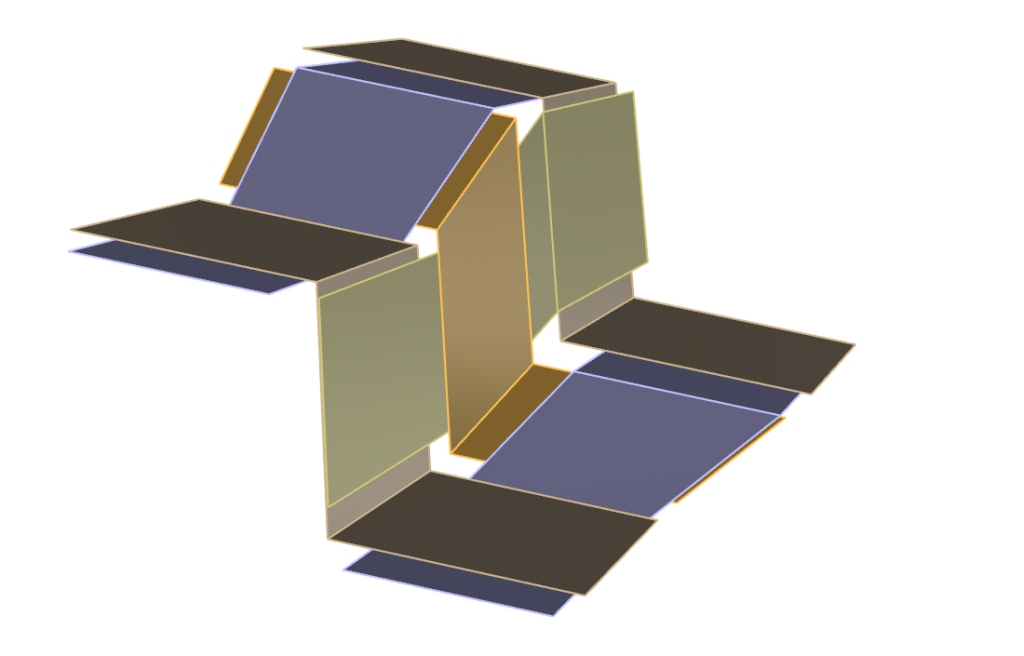
The doubly periodic Miura pattern was named after Japanese astrophysicist Koryo Miura, and is a well-known origami pattern for its rigid and flat foldabilities and its ability to deploy and retract in a restrictive way. Miura pattern is also known as rigid origami, which is concerned with folding structures using flat rigid sheet material with certain thicknesses, such as metal, wood, plastic, etc, that are joined by hinges. Rigid origami has also studied as Thick origami by Tomohiro Tachi. In this article, he proposed using a new method called Tapered Panels in addition to Hoberman’s symmetric Miura-ori vertex method and Trautz and Kunstler’s Slidable Hinges method. Recently, Tomohiro Tachi and Tom Hull presented Double-line rigid origami as an extension of the crease offset method of thick rigid origami.
Interestingly, Miura surface can also be understood as a generalized example of bi-foldable infinite polyhedral complexes, or zonohedra, that are bounded by parallelograms. Similar to the weaving of a cube or other zonohera that has been studied by artist Rinus Roelofs, a polyhedron weaving technique can be used to construct these polyhedral complexes. A Miura surface can therefore be woven by strips of paper (see a diagram below), or thick materials such as corrugated cardboard. More images below show the added thickness and the stylization to the woven Miura surface in 4 mm thick corrugated cardboard. It was interesting to learn that weaving Miura surface with thick and rigid panels is a lot easier than adding thickness to the Miura origami panels.

